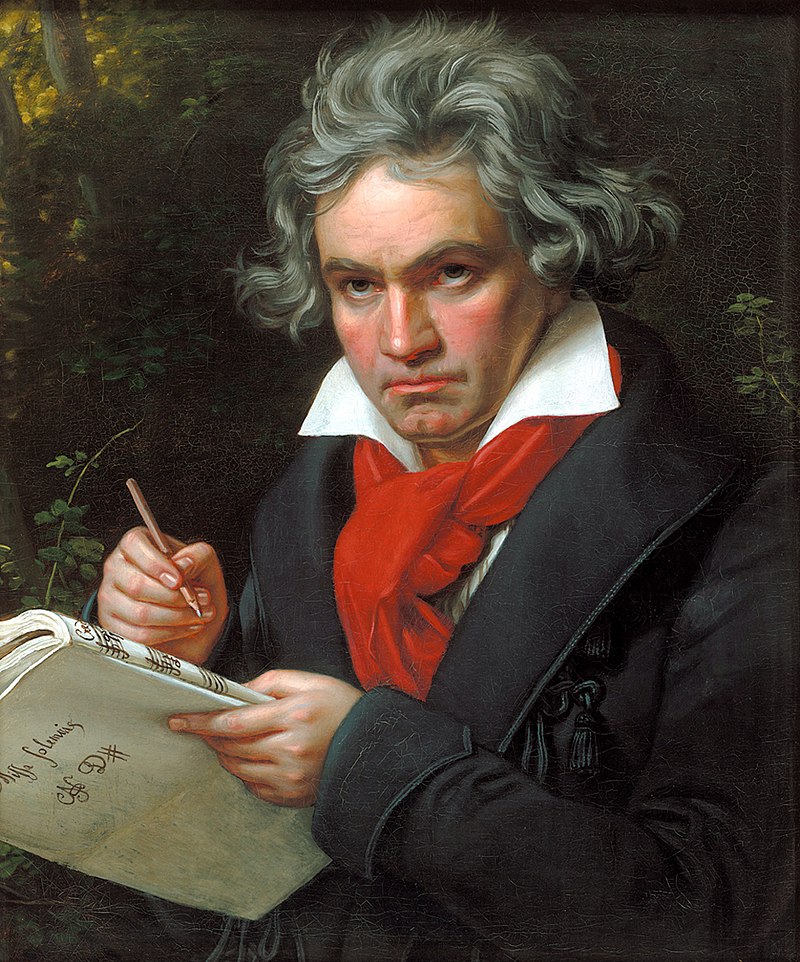Ludwig van Beethoven (partially found pieces from German composer; 1700s-1800s): Difference between revisions
From The Lost Media Wiki
No edit summary |
(Added some clarity) |
||
| Line 9: | Line 9: | ||
==The Missing Works== | ==The Missing Works== | ||
As to be expected with any classical composer's works, some are destined to be lost, whether due to never being completed, never being published, or due to all copies being destroyed. Here is a list of Beethoven's lost works.<ref>[https://imslp.org/wiki/List_of_works_by_Ludwig_van_Beethoven IMSLP's page listing the works of Ludwig van Beethoven]</ref> | As to be expected with any classical composer's works, some are destined to be lost, whether due to never being completed, never being published, or due to all copies being destroyed. Here is a list of Beethoven's lost works, including reconstructed pieces as we are not certain that the reconstructed pieces are what Beethoven had originally wanted.<ref>[https://imslp.org/wiki/List_of_works_by_Ludwig_van_Beethoven IMSLP's page listing the works of Ludwig van Beethoven]</ref> | ||
* 6 Minuets (1795 orchestral arrangement; piano arrangement exists) | * 6 Minuets (1795 orchestral arrangement; piano arrangement exists) | ||
Revision as of 03:02, 19 June 2019
Ludwig van Beethoven (December 17th, 1770-March 26th, 1827) was a very well-respected German composer, most popular for pieces such as Ode to Joy, Symphony No. 5 in C Minor, Fur Elise, and Piano Sonata No. 14 (Moonlight Sonata)
The Missing Works
As to be expected with any classical composer's works, some are destined to be lost, whether due to never being completed, never being published, or due to all copies being destroyed. Here is a list of Beethoven's lost works, including reconstructed pieces as we are not certain that the reconstructed pieces are what Beethoven had originally wanted.[1]
- 6 Minuets (1795 orchestral arrangement; piano arrangement exists)
- 7 Ländler (1799 orchestral arrangement; piano arrangement exists)
- 12 German Dances (1792-1797 orchestral arrangement; piano arrangement exists)
- Ecossaise in G (1810 band arrangement; piano arrangement by Carl Czerny exists)
- Rondo in B-flat (1793 orchestra and piano arrangement; only fragments survive, reconstructed by Carl Czerny)
- Piano Sonata in C (1791-1793; partially lost, reconstructed by Ferdinand Ries)
- Violin Concerto in C (1790-1792; only fragments of movement one survive, reconstructed by Joseph Hellmesberger Sr in 1876)
- Wind Quintet in E-flat (1793-1796; only fragments survive, reconstructed by Leopold Alexander Zellner in 1862)

